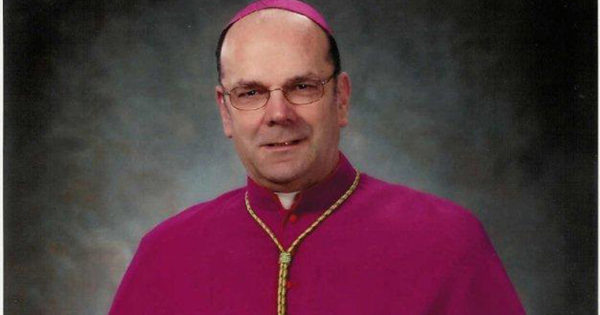The past week has been an especially joyful one for me as I welcomed two new neighbors. On Monday, April 26, I traveled to Scranton for the ordination and installation of the Most Rev. Joseph C. Bambera as the new bishop of that diocese. The Diocese of Scranton is our neighbor to the south and covers 11 counties in Northeastern Pennsylvania. On Friday, April 30, I traveled to my former home in the North Country of our state. There, the Most Rev. Terry R. LaValley was ordained and installed as the 14th bishop of the Diocese of Ogdensburg. The Diocese of Ogdensburg embraces more than 12,000 square miles, which is roughly a quarter of the territory of New York State.
The priests and people of the Diocese of Ogdensburg were happy to have one of their own priests ordained and installed as their bishop. I was privileged to be one of the three bishops chosen to ordain Bishop LaValley. Spirits were high as I returned to a place which I had enjoyed immensely during the five years of calling Ogdensburg home. It was an opportunity to greet many former friends, to celebrate with the new bishop and his family the faith of the local church and to thank God for the honor of serving there.
These ceremonies are always magnificent celebrations in the local church. They are occasions to experience both the distinct culture of a local Church and the universality of the Church which we lovingly esteem. As I listened to and participated in the ordination of these two bishops, I reflected anew on the goodness of God in providing for His Church and on the dignity and common vocation to serve God’s people which I share with them. The Rite of Ordination reminds us that the title of bishop is not one of honor, but of service. My joy now is to serve the needs of the priests and people of this local church — a service which I hope will be beneficial as we continue on the journey of life and faith which is our lot.
What is a bishop? According to the Catechism of the Catholic Church, the office of bishop holds the chief place of those offices which have been exercised in the Church from the earliest times. In virtue of the unbroken succession going back to the beginning, the bishop is regarded as a transmitter of the apostolic line. (cf. #1555) To fulfill their exalted mission, “the apostles were endowed by Christ with a special outpouring of the Holy Spirit coming upon them, and by the imposition of hands they passed on to their auxiliaries the gift of the Spirit, which is transmitted down to our own day through Episcopal consecration.” (#1556)
The bishop is given the task of sanctifying, teaching and ruling. In his own diocese he takes the place of Christ Himself as teacher, shepherd, and priest and acts as His representative. By virtue of his ordination as a bishop, together with all the bishops, he also has responsibility for the apostolic mission of the universal Church.
Sacred Scripture and the tradition of the Church give us many images of the bishop. In these sacred sources, the bishop is depicted as a shepherd, fisherman, father, brother, servant, teacher and leader. He is called to be a man of faith, hope and charity; a man of gentleness and compassion who promotes unity among God’s people and communion with God.
A bishop needs to keep these images in mind as he fulfills his mission assisted by his priests. Primary among his responsibilities is the need to remember that the Church is a community of faith, needing to be nourished by God’s Word. It is a community of grace built up by participation in Mass and the celebration of the other sacraments through which God is offered a sacrifice of praise. The Church is a community of charity, spiritual and material, that receives its life from the fountain of the Eucharist. And like the earliest followers of Jesus, its mission is to bear witness to the goodness of God.
In the community of the Church there are many different vocations and ministries. The bishop’s role is to exercise his ministry not in isolation but in close union with his priests and deacons, with those who have consecrated their lives to the Lord in a special way and with the devoted members of the laity. In this work, the bishop is to remain the foundation and visible principle of unity for his particular Church. It is a task which he holds in the earthen vessel of his own being.
My favorite image of the bishop is Christ as the Good Shepherd leading all of us ever closer to God. This image also suggests to me the need for daily fidelity to the mission, total dedication to the Church, joy in leading to the Lord the people entrusted to my care and gathering the scattered sheep into communion. The Good Shepherd comes not to be served but to serve (cf. Mt 20:28). He offers His life for the flock (cf. John 10:11).
As I ask you to remember in prayer our new neighbors, Bishop Bambera, Bishop La Valley and their people, I also ask you to pray for me. May the ministry to which I have been called be accomplished after the example of the Good Shepherd and benefit all in the Diocese of Syracuse. Thus together may we go forward in faith, hope and charity until we reach our eternal home.
Most Rev. Robert J. Cunningham
Bishop of Syracuse





